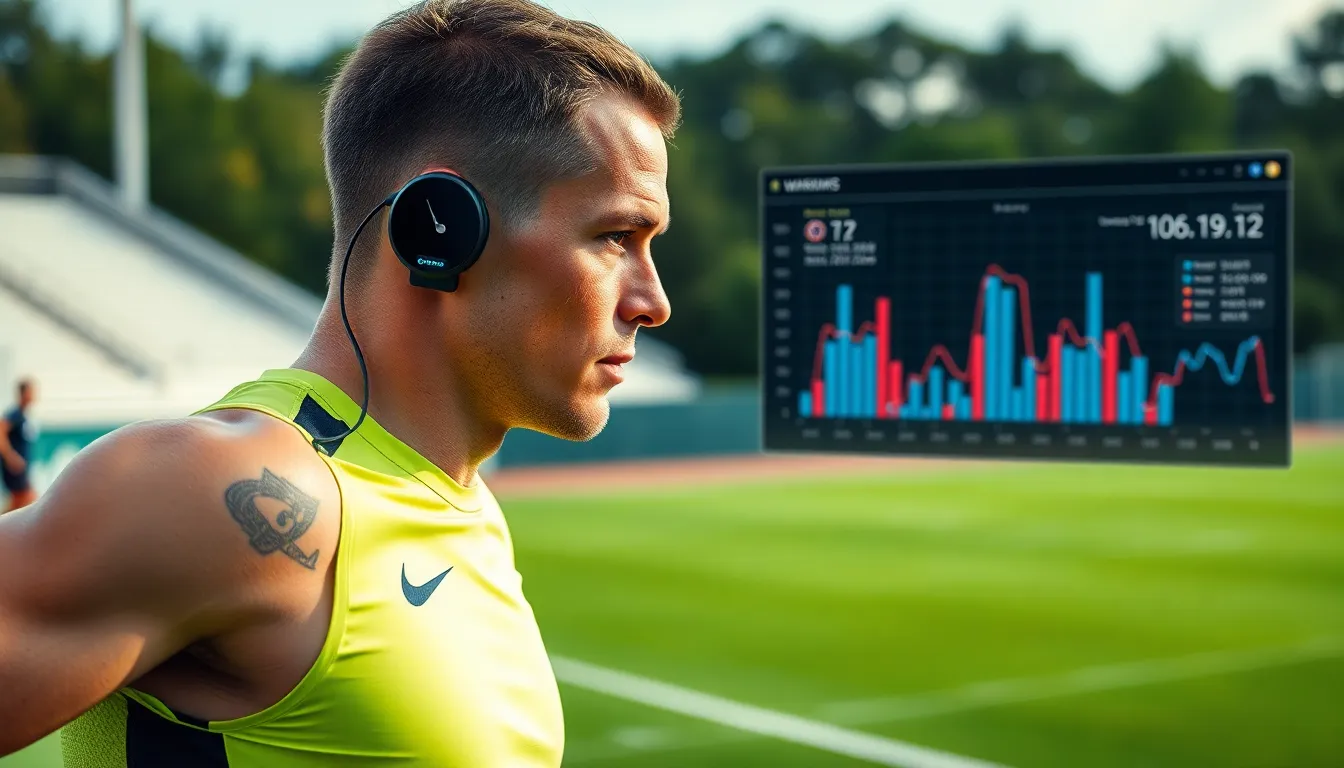In the fast-paced world of sports, athletes are always on the hunt for that extra edge. Enter sports performance analysis—the secret sauce that transforms raw talent into championship-winning prowess. Think of it as the GPS for athletic success, guiding players through the twists and turns of their performance data.
Sports Performance Analysis
Sports performance analysis serves as a vital resource for athletes aiming to refine their skills. This method employs data-driven insights, enabling athletes to achieve peak performance.
Definition and Importance
Sports performance analysis involves systematic evaluation of an athlete’s play to identify strengths and weaknesses. Understanding this evaluation helps athletes make informed adjustments, leading to improved outcomes. Accurate analysis contributes to enhanced training programs by tailoring them to individual needs. Becoming familiar with one’s performance metrics allows athletes to set realistic goals and track progress effectively. Research indicates that such analysis can lead to measurable improvements in performance, ensuring athletes can compete at higher levels.
Key Components of Analysis
Key components of sports performance analysis include data collection, performance metrics, and feedback mechanisms. Data collection utilizes technology like wearables and video analysis to gather relevant information. Performance metrics assess areas such as speed, endurance, and technique, guiding training decisions. Feedback mechanisms create channels for athletes to understand findings and make changes accordingly. Additionally, collaboration with coaches enhances the effectiveness of analysis, ensuring that insights translate into actionable strategies. Each component plays a crucial role in fostering a deeper understanding of athletic performance.
Techniques Used in Sports Performance Analysis

Sports performance analysis employs various techniques to enhance athletic capabilities. This section discusses data collection methods and data analysis tools pivotal in the process.
Data Collection Methods
Data collection involves several technological approaches. Wearable devices monitor metrics such as heart rate, distance run, and calories burned. Video analysis captures athletes’ movements during training sessions or competitions. Motion capture technology tracks body mechanics in real-time, providing precise data on technique. Surveys and questionnaires collect subjective feedback from athletes about their performance and experiences. These methods enable the gathering of comprehensive performance data, forming the foundation for effective analysis and improvement.
Data Analysis Tools
Data analysis tools process the collected information efficiently. Software programs analyze performance metrics to reveal insights about strengths and weaknesses. Statistical analysis tools compare data against benchmarks or previous performances. Visualization tools such as graphs and charts present findings in an accessible format. Machine learning algorithms identify patterns in data, predicting performance outcomes based on various inputs. Utilizing these tools enhances the understanding of athletic performance, allowing for informed training decisions and strategies.
Applications of Sports Performance Analysis
Sports performance analysis finds vital application across various domains, enhancing both individual and team outcomes through data-driven insights.
Individual Athlete Assessment
Individual athlete assessment uses personalized data to tailor training programs. Coaches analyze metrics like speed, endurance, and technique to identify strengths and weaknesses. Feedback plays a crucial role, providing athletes with clear insights into their performance. For instance, wearable devices record heart rates and movement patterns, facilitating precise evaluations. This targeted analysis helps athletes optimize their training, establish achievable goals, and monitor progress. Additionally, regular assessments foster a deeper understanding of an athlete’s capabilities, promoting growth and development.
Team Performance Evaluation
Team performance evaluation focuses on collective metrics that drive overall success. Analyzing game statistics, such as possession percentages and passing accuracy, reveals areas for improvement. Video analysis captures gameplay, highlighting strengths and weaknesses in team strategy. Data visualization tools present findings effectively, enabling coaches to formulate tactical adjustments. Collaborating with athletes ensures everyone understands team dynamics and their impact on performance outcomes. By employing comprehensive evaluation methods, teams can enhance cohesion and coordination, ultimately elevating their competitive edge.
Challenges in Sports Performance Analysis
Sports performance analysis faces several challenges impacting its effectiveness. These challenges often stem from issues related to data integrity and interpretation.
Data Accuracy and Reliability
Data accuracy proves essential in sports performance analysis. Collecting reliable metrics from wearable devices and video analysis often involves inconsistencies. For instance, inaccurate heart rate readings can lead to incorrect training recommendations. Calibration of devices must occur consistently to maintain reliability. Furthermore, environmental factors can distort data collection, such as varying weather conditions during outdoor activities. Ensuring data integrity requires regular device maintenance and rigorous validation processes to confirm results are dependable. Importantly, any discrepancies can misguide both athletes and coaches, ultimately hindering performance improvements.
Interpretation of Results
Interpreting analysis results can also present challenges. Coaches and athletes may struggle to fully understand complex data without proper context. Metrics such as speed, endurance, and technique metrics require careful analysis to derive meaningful insights. Identifying which data points influence performance most significantly demands experience and expertise. Furthermore, overinterpretation of minor fluctuations in metrics might mislead training focus. Coaches should emphasize data trends rather than isolated metrics to guide decisions effectively. Through collaboration, coaches and athletes can align their interpretations, ensuring clarity in translating data into actionable strategies.
Future Trends in Sports Performance Analysis
Emerging trends in sports performance analysis show significant advancements that enhance athletic evaluation.
Technology Advancements
Innovations in technology continually reshape how performance analysis occurs. Wearable sensors now capture real-time data on heart rates, movement patterns, and physiological responses. Machine learning algorithms offer deeper insights into performance by identifying patterns in large data sets. Enhanced video analysis tools incorporate AI to evaluate technique and strategy during training sessions or competitions. Advanced motion capture technology enables detailed biomechanical assessments, helping identify areas for improvement. Integrating these cutting-edge tools empowers athletes to refine their skills with precise data-driven feedback.
Integration with Training Programs
Effective integration of performance analysis into training programs allows for personalized athlete development. Coaches utilize data insights to create tailored training regimens that align with individual strengths. Regular feedback from analysis promotes ongoing adjustments, ensuring athletes remain on track toward their goals. Collaboration between coaches and athletes fosters a shared understanding of performance metrics, encouraging engagement and motivation. Periodic evaluations further assess progress, allowing adjustments based on evolving training needs. This comprehensive approach elevates overall performance, ensuring athletes benefit from continuous data-informed insights.
Conclusion
Sports performance analysis stands as a game-changer for athletes aiming for excellence. By leveraging advanced technology and data-driven insights, athletes can refine their skills and enhance their competitive edge. The integration of personalized training programs and ongoing evaluations ensures that athletes stay on track with their goals.
As the field evolves with innovations like real-time data capture and AI-driven tools, the potential for enhanced performance continues to grow. Emphasizing collaboration between athletes and coaches fosters a deeper understanding of data, translating analysis into actionable strategies. This comprehensive approach not only boosts individual performance but also strengthens team dynamics, paving the way for success in the competitive sports arena.

